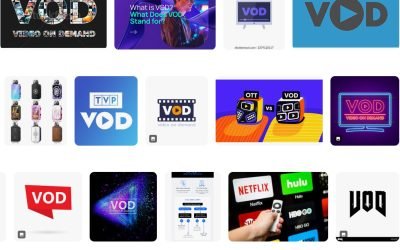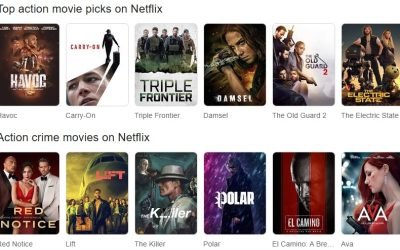Understanding Sports Entertainment
Sports entertainment refers to a unique blend of competitive athletics and theatrical performance that has gained popularity over recent decades. Unlike traditional sports, which primarily emphasize athletic skill and competition, sports entertainment incorporates narrative elements, character development, and spectacle to create an engaging experience for audiences. This fusion often results in shows that transcend mere sporting events to become multifaceted entertainment spectacles that attract a broad viewership.
At the heart of sports entertainment lies a comprehensive production process that entails meticulous planning and execution. Producers, writers, and event coordinators collaborate to construct storylines that resonate with fans. These narratives often involve rivalries, alliances, and dramatic arcs, much akin to scripted television shows. Such storytelling frameworks enhance the emotional connection between participants and the audience, elevating the overall experience.
Additionally, character development is a crucial component of the sports entertainment landscape. Athletes or performers assume larger-than-life personas that reflect personal traits, rivalries, or cultural narratives. This characterization allows fans to engage more deeply with the athletes as they invest emotionally in their journeys, successes, and failures. Inclusion of elements such as entrances marked by music and choreography further amplifies the theatrical aspect, effectively drawing the audience into the spectacle.
Moreover, the behind-the-scenes work in sports entertainment extends to technical production elements; lighting, sound, and visual storytelling all complement the live action. Each event is orchestrated to highlight the strengths of the performers while maintaining an intricate balance between athleticism and showmanship. In this way, sports entertainment not only captivates sports fans but also attracts those who appreciate performance art, transforming the viewing experience into a spectacular event that is rich in both excitement and artistry.
The Historical Evolution of Sports as Entertainment
The journey of sports transforming into a form of entertainment spans centuries and reflects the changing societal values and technological advancements. The origins of competitive sports can be traced back to ancient civilizations. For instance, the ancient Greeks celebrated athleticism through the Olympic Games, which began in 776 BC. These competitions not only showcased physical prowess but also served as a means to honor gods, emphasizing the cultural importance of sports within their society.
During the Middle Ages, sports such as jousting and archery emerged, often tied to nobility and warrior culture. As societies evolved, the Renaissance period saw an increase in organized recreational activities. By the 19th century, sports began to take on a more formal structure with the establishment of various sporting clubs and federations. This era marked the rise of organized sporting events, such as football and cricket, which began to attract larger audiences and foster community spirit.
The impact of media coverage is pivotal in the evolution of sports as entertainment. The advent of the radio in the early 20th century allowed fans to experience games in real-time, and television in the 1950s revolutionized sports viewership. As technology continued to advance, the availability of cable networks and the internet opened new avenues for fans to engage with their favorite athletes and teams. Live broadcasts and highlight reels transformed how sports content was consumed, allowing for greater interaction and excitement.
Significant milestones punctuated this journey, such as the professionalization of leagues and the introduction of sports marketing. The integration of entertainment elements, such as halftime shows and celebrity involvement, further blurred the lines between sports and entertainment. Today, sports events are not merely competitions; they are grand spectacles that captivate audiences globally, showcasing a dichotomy of athleticism and showmanship that continues to evolve with each passing year.
The Role of Media in Sports Entertainment
The convergence of media and sports entertainment has significantly altered the landscape of how audiences engage with athletic events. Traditional medium such as television has long been a primary platform for broadcasting sporting events, offering expansive coverage that includes live games, expert analyses, and pre-and post-game shows. The ability to reach millions of viewers simultaneously has made television an essential tool for promoting sports entertainment. Major events, such as the Super Bowl and the Olympics, are prime examples where extensive television coverage significantly boosts viewer engagement and generates substantial advertising revenue.
In recent years, social media has emerged as a revolutionary force in sports entertainment. Platforms like Twitter, Facebook, and Instagram allow fans to connect with their favorite athletes and teams in real-time. This accessibility enhances the viewer experience, making it interactive and participatory. Athletes utilize these platforms to share behind-the-scenes content, engage with fans, and promote events, effectively turning their personal brands into a significant component of sports entertainment. The immediate nature of social media facilitates quick reactions to events, creating a virtual space for discussions and debates among fans and analysts alike.
Digital platforms have also played a crucial role in the evolution of sports viewership. Streaming services like ESPN+ and Amazon Prime Video have emerged, providing alternative ways to consume sporting content. Such services have enabled viewers to watch games on-demand, catering to audiences’ preferences for flexibility in viewing. Additionally, the availability of highlight reels and full game replays on platforms like YouTube has further enriched the sports entertainment experience by allowing fans to catch up on missed events, thus broadening their access to diverse content. Ultimately, the landscape of sports entertainment continues to evolve through media innovations, engaging a wider audience and adding layers of excitement to athletic camaraderie.
Athletes as Entertainers: The Star Power of Sports Figures
The modern athlete occupies a unique position that transcends the realm of mere competition; they are also entertainers and celebrities in their own right. This multifaceted role is facilitated by the aura of star power that sports figures generate both on and off the field. Factors such as charisma, exceptional skill, and adept public relations play pivotal roles in crafting an athlete’s celebrity status. The rise of social media and digital platforms has further enhanced this phenomenon, allowing athletes to connect with fans in unprecedented ways.
Branding is a significant aspect of an athlete’s journey into the entertainment industry. Successful athletes often cultivate personal brands that reflect their values, interests, and unique personalities, enabling them to distinguish themselves in a crowded market. For instance, endorsements become a critical component of this branding strategy, as companies seek to collaborate with athletes who can effectively promote their products. These partnerships leverage the athlete’s star power to reach wider audiences, proving that their influence extends well beyond the sports arena.
Additionally, an athlete’s off-field persona contributes significantly to their overall appeal. Many sports figures engage in activities such as philanthropy, entrepreneurship, and media appearances, which amplify their presence in the entertainment landscape. This multifaceted approach not only boosts an athlete’s visibility but also cultivates a dedicated fan base that is eager to support their endeavors. The ability to engage fans on a personal level is an essential element of an athlete’s brand, as it fosters a sense of loyalty and community among supporters.
In conclusion, athletes function as entertainers by harnessing their star power through effective branding, strategic endorsements, and genuine fan engagement. Their influence, characterized by charisma and skill, solidifies their status as cultural icons, intertwining the worlds of sports and entertainment in a profound manner.
The Spectacle: Showmanship in Sports and Entertainment
Sports entertainment has evolved into a multi-faceted spectacle that encompasses not merely the athletic competition but also a captivating display of showmanship. The integration of theatrical elements plays a crucial role in enriching the overall viewing experience, creating an atmosphere that engages diverse audiences. Pre-game ceremonies, for instance, set the tone for the event, often featuring elaborate introductions of teams and players designed to instill excitement and anticipation among fans. These ceremonies include performances by cheerleaders, dancers, and sometimes guest artists, which serve to elevate the emotional stakes of the upcoming competition.
Moreover, halftime shows have become synonymous with major sporting events, blending athleticism with entertainment on a grand scale. These intermissions provide a platform for popular music artists to perform, thereby attracting not only sports fans but also music enthusiasts who may not have initially been inclined to watch the game. The infusion of entertainment during breaks exemplifies how sports organizations strive to cater to broader demographics, ensuring a more inclusive atmosphere. As a result, halftime performances have become a hallmark of exceptional showmanship, often remembered just as prominently as the athletic exhibition itself.
Additionally, the use of pyrotechnics and dazzling light displays has become commonplace in various sports arenas, augmenting the theatrical appeal. The combination of fireworks, smoke, and vibrant lighting effects captures the attention of audiences, making events feel more like grand celebrations rather than mere competitions. This embellishment fosters a heightened sense of energy, encouraging spectators to become fully immersed in the experience. By embracing these varied showmanship techniques, sports organizations successfully transform games into spectacular events that resonate with audiences on multiple levels, ultimately blurring the lines between sports and entertainment.
Fan Engagement and Its Importance in Sports Entertainment
In the contemporary landscape of sports entertainment, fan engagement has emerged as a central pillar for teams and organizations striving to cultivate a loyal and passionate following. By actively fostering connections with fans, sports entities are able to enhance the overall spectator experience, subsequently increasing their marketability and reach. Effective engagement strategies not only elevate the excitement surrounding live events but also strengthen the emotional ties between fans and their favorite teams.
One prominent method through which teams engage fans is through the implementation of interactive technology. Modern advancements such as mobile applications, augmented reality, and social media platforms allow for real-time communication and content sharing. Fans can now vote for their favorite players, participate in live polls, and even access exclusive behind-the-scenes content. This level of interaction creates a more immersive experience, ensuring that fans feel integral to the unfolding entertainment.
In addition to technological innovations, fan-focused events, such as meet-and-greets, open practices, and fan festivals play a vital role in community involvement. These initiatives provide fans with opportunities to engage with players and immerse themselves in the culture surrounding their favorite teams. Furthermore, such events promote community bonding, drawing in individuals who may not typically follow the sport but are interested in the social aspect of these gatherings.
The relationship between dedicated fanbases and the success of sports entertainment is evident. A passionate fan group not only attends games but also drives merchandise sales, shares content across social media, and promotes the team within their communities. Consequently, organizations that prioritize fan engagement tend to see improved attendance rates and brand loyalty, ultimately shaping the future of sports entertainment. Through cultivating these relationships, teams not only enhance their performance on the field but also strengthen their position in the entertainment industry.
The Financial Impact
The financial landscape of sports entertainment is both multifaceted and robust, characterized by diverse revenue streams that significantly shape the industry. Ticket sales have traditionally provided a substantial portion of income for teams and venues. Depending on the popularity and success of a sports franchise, ticket prices can yield millions in revenue, particularly during marquee events or playoff games. This source of revenue not only assists in operational costs but also enhances the overall experience for fans, contributing to their loyalty and engagement.
In conjunction with ticket sales, merchandising plays a critical role in the financial success of sports entertainment. From team jerseys to branded memorabilia, merchandise sales serve as a vital income stream. The demand for apparel and collectibles fosters a direct connection between fans and their favorite teams. Moreover, strategic marketing efforts can lead to increased merchandise visibility, amplifying revenue potential and brand loyalty.
Broadcast rights represent another significant source of financing within sports entertainment. Major networks and streaming platforms invest heavily in securing exclusive rights to broadcast games, recognizing the immense viewership potential. These agreements not only inject cash flow into the leagues and teams involved but also enhance their visibility among global audiences. This escalating competition among media entities often results in bidding wars, further escalating financial stakes within the industry.
Additionally, sponsorships and partnerships with corporate entities bolster the economic framework of sports entertainment. Corporations seek visibility and association with popular teams and athletes, leading to lucrative endorsement deals and sponsorship arrangements. This interplay between teams, leagues, sponsors, and media companies fosters a symbiotic relationship that drives innovation and growth within the sector. As a result, the financial impact of sports entertainment continues to evolve, reflecting the dynamic nature of consumer interests and market trends.
The Future: Trends and Innovations
The landscape of sports entertainment is undergoing a transformative evolution, with technology leading the charge in reshaping how audiences engage with their favorite athletic spectacles. One of the most significant trends emerging in this sector is the rise of eSports. This competitive gaming phenomenon has quickly garnered a massive following, blurring the lines between traditional sports and digital entertainment. Major sports franchises are investing in eSports teams and events, recognizing its potential to attract a younger, tech-savvy audience. As eSports continues to grow, it reflects a pivotal shift in how fans consume and interact with sports content.
Simultaneously, advancements in virtual reality (VR) are creating new opportunities for fans to experience sports in immersive ways. VR technology enables viewers to feel as if they are part of the action, allowing them to watch games from various angles and even simulate the experience of being on the field. This innovation not only enhances viewer engagement but also opens doors for innovative storytelling within the sports narrative. As VR becomes more accessible, it is likely to play an integral role in the future of live sports events, making them more engaging and interactive for audiences.
Changes in consumption patterns also significantly impact the sports entertainment industry. Many fans are moving away from traditional television broadcasts and embracing streaming services that provide instantaneous access to various sports content. This shift has prompted leagues and teams to adapt their marketing strategies, focusing on digital platforms and social media to reach broader audiences. Personalization and data analytics are becoming paramount in delivering tailored experiences for fans, allowing for targeted advertising and content curation unlike ever before.
As we look forward, the confluence of technological advancements and changing audience preferences promises to redefine the future of sports entertainment. It invites a robust dialogue about what is next for athleticism and showmanship in a rapidly evolving digital age.
Conclusion: The Enduring Relationship
The interplay between sports and entertainment has shaped both sectors significantly, creating a vibrant culture that captivates audiences worldwide. Throughout this discussion, we have examined how athleticism and showmanship combine to enhance viewer engagement and foster a unique experience. The evolution of sports into an entertainment spectacle, characterized by elaborate pre-game ceremonies, halftime shows, and engaging fan interactions, exemplifies how the two domains converge to offer something beyond mere competition.
This relationship is underpinned by the mutual benefits that both industries derive from collaboration. For instance, the involvement of entertainers in major sporting events often boosts viewership, while athletes are increasingly recognized not only for their talents on the field but also for their appeal off the field. This cross-pollination has given rise to new forms of entertainment, such as eSports and reality TV shows centered around athletes, showcasing an ever-expanding array of options for audiences.
As we move forward, it is essential to consider how the synergy between sports and entertainment will continue to evolve. Advances in technology, such as virtual reality and augmented reality, are set to create increasingly immersive experiences that may redefine spectator engagement. Additionally, changing societal values and expectations will likely influence how athletes and entertainers interact with their audiences, leading to innovative formats that blend competition with relatability.
Ultimately, recognizing the seamless connection between sports and entertainment enhances our understanding of both sectors. Each provides a mirror through which the other can develop, encouraging fans to explore their personal experiences within the rich tapestry of athletic and entertainment events. This ongoing narrative invites us to reflect on our perceptions and experiences, further solidifying the enduring bond that exists between these two dynamic fields.















